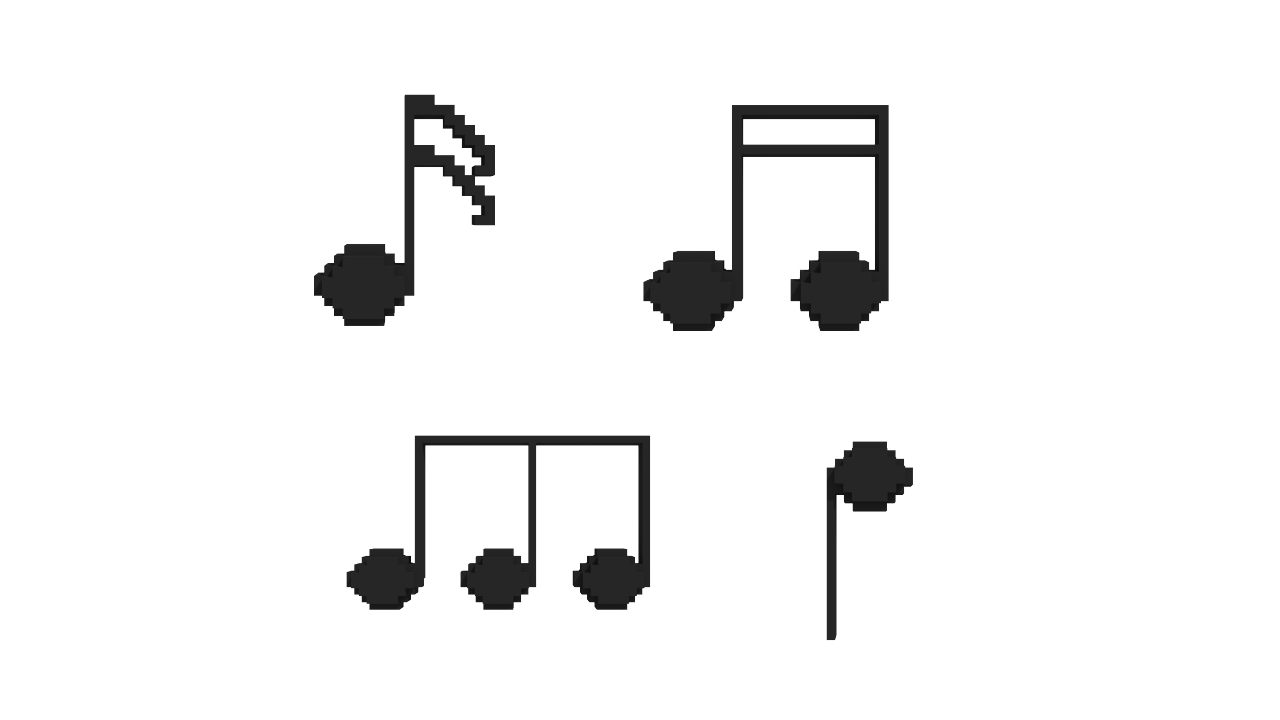
Twinkle
Groupl project. Dec 5, 2018
Role
researcher, game task creation, modeler, colourist, audio editor
Tool
MagicaVoxel, MAYA,Unity 3D, Audacity, Adobe Mixamo
Type
game design, model design, audio design
Skills
researching, ideation, 3D modelling, audio editing
Time
2 months
Team Website: http://www.sfu.ca/~sza79/IAT445/teamSite/Homepage.html


Introduction
Featuring a distinctive artistic style that sets up an amazing and magical world within this little girl's regular room, this VR experience allows the players to experience a fantasy world in a small body while they can also be able to interact with multiple objects within the world.
In this 4-person group project, we combined game design, sketching, 3d models in both regular and pixelated styles, textures, scriptings, lightings, animations, skybox, ambient background music, and sound effects. I mainly focused on pixelated modelling, audio editing and game task design.



Inspiration
We brainstormed all our favourite game elements and then later chose our top three from the list:
1) entering the small world
2) living under the sea/up upon the sky
3) fantasy world
It was hard for us to choose the best one, so we decided to combine the first and last ideas to create a dream world.
This inspiration gave us the idea of creating a pixelated world in our project. Pixel style can convey a retro feeling to users. For the technical part, we thought to combine the pixel and realistic style model together could show a strong contrast feeling to players.
There are many LEGO parts that match our pixelated world and they are one of the symbols of children. From the technical side, LEGO style models can avoid some issues of textures.


Sketching & Storyboarding
Having perfected the story, we moved to the storyboarding step to design our game interactions. When designing game levels and tasks, we must make sure actions were meaningful, otherwise, players would feel confused.
We had two game levels; the first level was in a normal bedroom, and the second level was in a smaller pixelated world. To show our three elements in a limited time, we used two different modelling styles to make our players feel more immersed.
From TA’s feedbacks, we developed the meanings of game interactions. For example, we designed to let players put one cube on a toy house and players could change smaller, but players felt confused about what happened. As game designers, we knew what happened, but could not assume players had the same feeling with us. To make it causal, players could play with the magic wand and the magic diminished the players.
Original Design

Final Design

Interaction Design
At the beginning, despite our plenty of interactions consideration, the feedback from TA was not good enough. We sought out further inspirations by consulting more people which left us pondering more questions that were initially ignored.
Original Design

Final Design

Pre - final
Plan to complete - what is left
- adjust the lighting and coloring
- add the components to guide the users’ eyes
- more modeling objects
- add more grabbable objects
Plan to complete - issues
- No borders for the house
A script that slowly fades to black could be added when users try to walk out
- The interior design of the pixelated world
The front wall needs to be further made
- Some collisions are not finished
All of those will be fixed


Audio Editing
Before entering the pixelated world, the realism audio style was used to increase the contrast between the two worlds. Once the player enters the pixelated world, relaxing music and sound effects will be added to the environment.
I used Audacity to edit copyright free audio sources. To drag sources into Audacity which could generate soundtracks automatically. To edit soundtracks, I zoomed in and selected the fragments I wanted, then used “delete” or “ctrl+V” “ctrl+C” to change fragments’ positions.
Added audio effects to moving characters were more complicated. I took videos for their actions, and counted motion frequencies, then created synchronized audio for characters.
Animation
After making enough models, we paid attention to using Adobe Mixamo to create character animations and uploaded our models onto the website to design character actions and mapped triggering conditions by scripting in Unity.
We spent a long time in linking all of the animations together and kept changing them after testing in the VR headset. In order to avoid cybersickness, the rate of each animation was reduced.

User Feedback
In the final showcase, users enjoyed the interactions and animations we designed in the experience and appreciated the aesthetic style of the environment. Participants felt comfortable and all transitions were smooth to them.
Since most of our participants wanted to explore the pixelated world and expected more interactions happening, we are considering to further develop this project by allowing users to wander in the pixelated world.

